To know more about the graphic novel genre in India and how they tackle some of the most important socio-cultural and political phenomena, here is a list of 7 graphic novels from India that you must pick up.
The popularity of graphic novels has been in and out of the shadows ever since the very inception of the genre. Similarly, debates regarding the literariness of graphic novels are as old and new as the genre itself. Graphic novels like Maus (recipient of the Pulitzer Award) and Persepolis have changed the anatomy of how we perceive graphic fiction by talking about issues like the Holocaust and the Iranian revolution, things that dominant visual storytelling forms like comics never dealt with.
The legacy of visual storytelling in India dates back to ancient times, with cave paintings, temple frescos, and folk scroll painting practices. The tradition of comic books itself was grand, with anthologies like Amar Chitra Katha (1967) and the Tinkle series (1987). However, graphic fiction as a unique category came to the forefront in the early 2000s, with artists like Orijit Sen and Sarnath Banerjee spearheading its popularity. Corridor (2004) by Sarnath Banerjee is said to be India’s first-ever graphic novel.
Graphic novels in India are still an evolving genre, wherein the scope of diversification is manifold as linguistic and cultural diversity opens up the scope of many, often unexplored, themes and issues, both nationally and internationally. Here’s a list of 7 Indian graphic novels you should pick up to begin your exploration into this evolving genre.
- 1. This Side, That Side: Restorying Partition by Vishwajyoti Gosh
- 2. Sita’s Ramayana by Samhita Arni
- 3. Delhi Calm by Vishwajyoti Gosh
- 4. Bhimayana: Experiences of Untouchability by Durgabai Vyam and Subhash Vyam
- 5. Kari by Amruta Patil
- 6. Corridor by Sarnath Banerjee
- 7. A Gardener in the Wasteland by Srividya Natarajan and Aparajita Ninan
1. This Side, That Side: Restorying Partition by Vishwajyoti Gosh
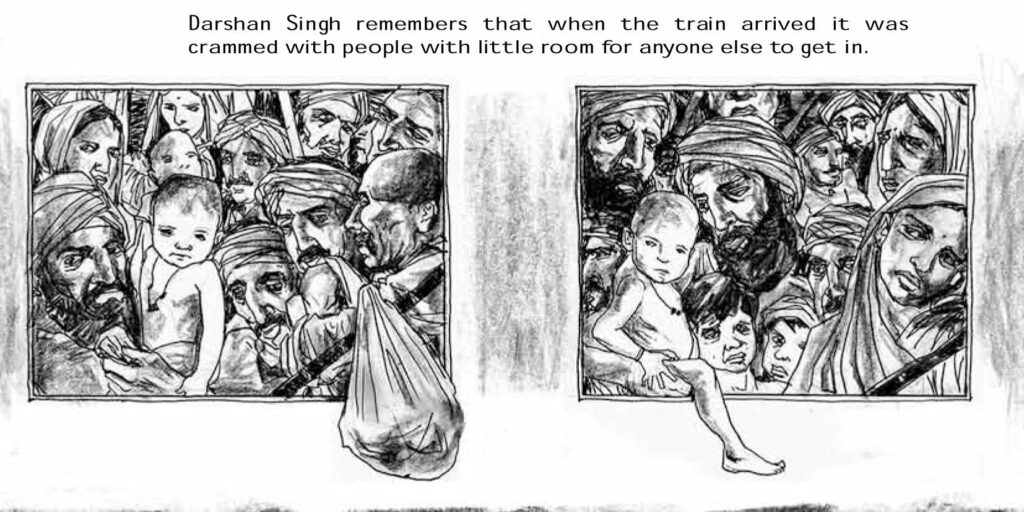
This Side, That Side (2013) is a short story anthology that documents the events of the immediate aftermath of Indian independence, especially the partition of the Indian subcontinent into India and Pakistan in 1947. The collection is edited by Indian cartoonist and graphic novelist Vishwajyoti Gosh. He curated diverse voices from both India and Pakistan in order to narrate the story of partition by incorporating the voices of both nations together; the word ‘restorying’ in the title depicts the very urge to narrate once again, to provide a new voice to something old.
The emotional landscape of partition is re-drawn with the contributions of various artists like Orijit Sen, Malik Sajad, Mohammad Sabaaneh, and so on. Stories of individual struggle, depicting the larger picture of two sibling nations that turned into enemies in no time, the shared trauma and historical memory are themes that run parallel throughout the anthology. A Seed in Search of Soil is one such story from the collection that highlights the harrowing conditions of partition through a ‘seed’ witnessing devastating events that displaced innumerable people from what once was their home.
Also Read: Uncover the Best 12 Books on the Indian Partition
2. Sita’s Ramayana by Samhita Arni
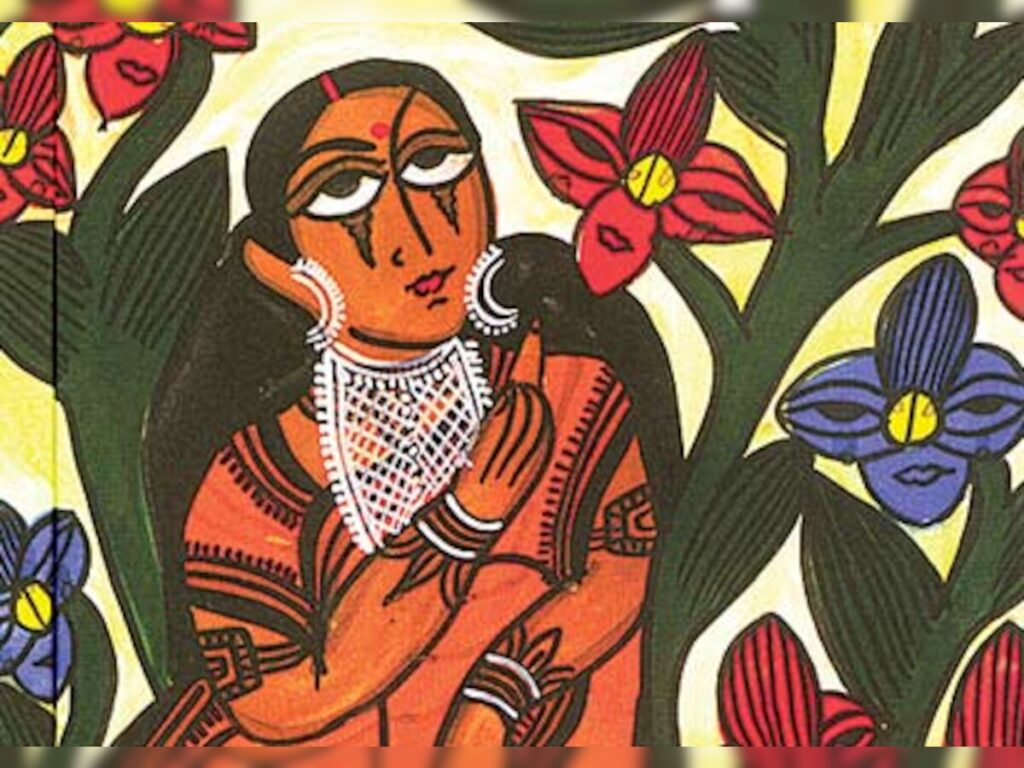
Samhita Arni is known for her exploration of Indian mythology and her innovative retellings of traditional stories. Her works often challenge established narratives and give voice to marginalized characters. Sita’s Ramayana (2018) by Samhita Arni is a feminist retelling of Ramayana through the perspective of Sita.
The novel begins with a depiction of the birth of Sita and her childhood. A peek inside the private life of Sita provides the reader with psychological insight into Sita’s independent nature. The narrative follows the events of Ramayana but through the eyes of Sita, her abduction, her reluctance to concede to the demands of Ravana, the epic battle of Ram and Ravana, and so on. However, the story doesn’t end at ‘Agni Pariksha’; we follow the aftermath of Sita’s exile in the bosom of her mother earth and her eventual renouncing of the same.
3. Delhi Calm by Vishwajyoti Gosh
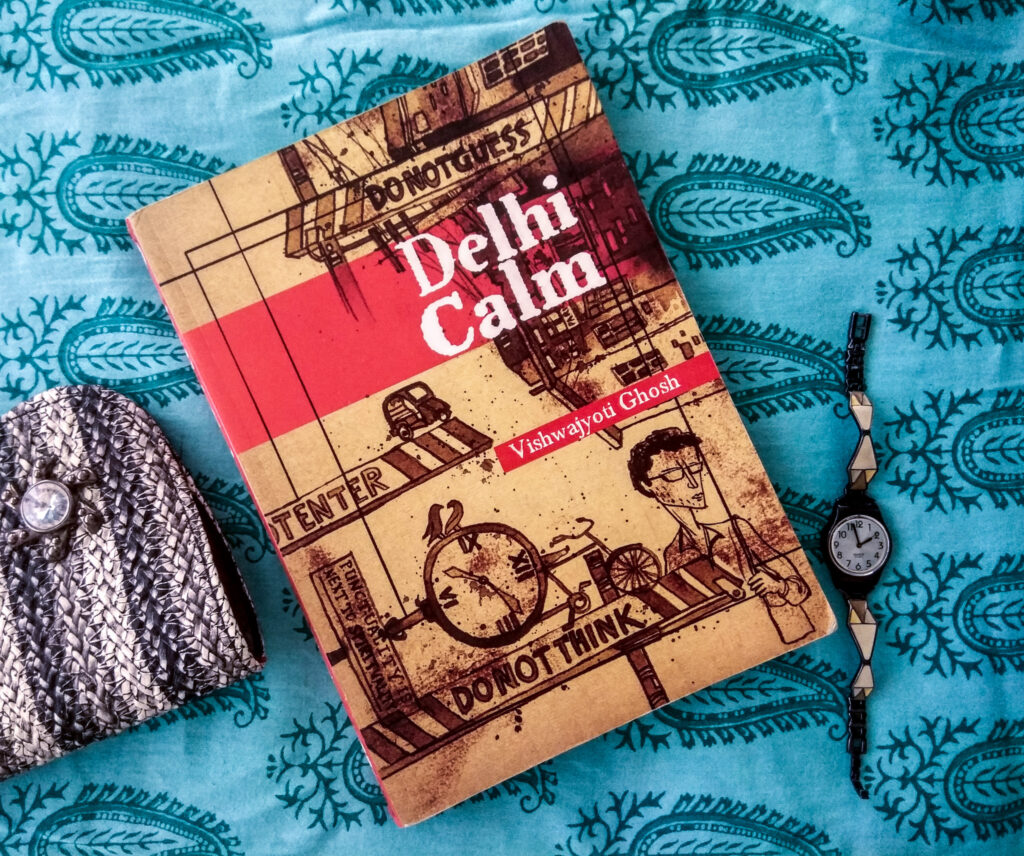
Delhi Calm (2010) is a retelling of the moment of political and social unrest in Indian society. Ghosh portrays the incidents following the Emergency in the late 1970s in a satirical tone. Through a medium of visual storytelling, the novel criticises the events that characterise the period of Emergency, including the censorship of the press, suspension of civil liberties, and a widespread wave of dissent that the political ambiguity engendered.
The abuse of power is depicted in the form of a striking visual narrative that includes characters from different sections of society. Each character is the benchmark of a certain facet of life, including a journalist, a bureaucrat, a politician, a student activist, and more. Through their interconnected stories, the graphic novel offers a multifaceted view of how the Emergency impacted different segments of Indian society. As the characters grapple with the changes brought about by the Emergency, their personal lives and political beliefs intersect, and the narrative dips into their struggles, fears, and hopes in a time of heightened surveillance and state control. The graphic novel captures the essence of a nation grappling with authoritarianism, drawing parallels with contemporary socio-political issues.
4. Bhimayana: Experiences of Untouchability by Durgabai Vyam and Subhash Vyam
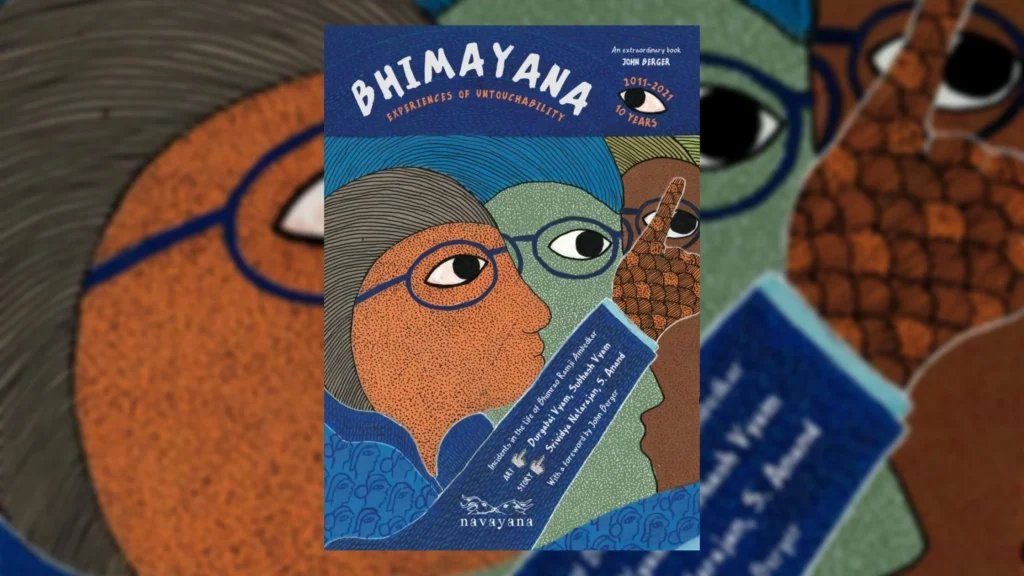
Bhimayana (2011), as the name suggests, is a graphic biography of Bhimrao Ramji Ambedkar. It is hailed for visuals that employ the traditional Gond art style, along with its vibrant, intricate patterns and striking colours, incorporating sections from Ambedkar’s speeches and writings that give us insights into his political and social philosophy. The artist Durgabai Vyam is one the most prominent female artists from Bhopal working in the Gond tradition of tribal art. She received Padma Shri in 2022 for her renowned contributions in the field of art as well. She and her husband, Subash Vyam, illustrated Bhimayana along with Srividya Natarajan and S. Anand, who wrote the same.
Bhimayana narrativises the journey and experiences of a little boy, Bhim, stranded in an unjust and violent world. The novel is divided into sections highlighting different aspects of Ambedkar’s life, documenting his life and legacy. The titles of these sections tell a story of their own — childhood and early experiences, the quest for education, the pursuit of higher education, the Poona Pact, the drafting of the constitution, conversion to Buddhism, and the relentless fight against social taboos. These sections provide a deeper understanding of discrimination, untouchability and the fight against it as put up by Babasaheb Ambedkar as they delve into the historical, public and private process of humiliation and its repercussions.
Also Read: 10 Best Works by Dr. BR Ambedkar That Should Be On Your Reading List
5. Kari by Amruta Patil
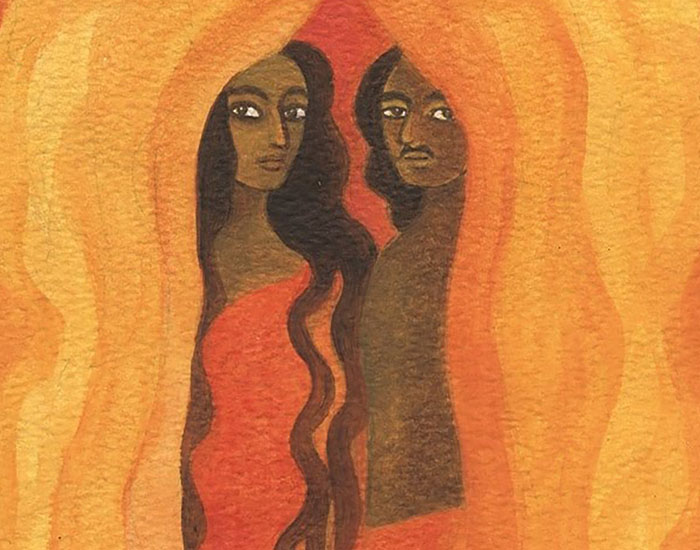
Kari (2008) by Amurta Patil is popularly believed to be one of the earliest graphic novels in India to delve deep into themes of marginalization and queer identity. Amurta Patil blends the dream-like quality of her artwork, the expressive use of color, and the story to add depth to the emotional resonance of the story. The narrative itself is non-linear, and through this fragmentation, the author comments on the fragmented nature of the memories and personal experiences of the protagonist.
An eponymous novel, Kari offers an intimate exploration of the life of the titular protagonist against the backdrop of the cosmopolitan city of Mumbai. Kari is a complex character dealing with societal pressures and expectations; these unmet expectations create a sense of isolation that makes Kari a stranger to herself and society. She grapples with issues such as her identity as a queer person, her job as a telephone operator, and her experiences with love and relationships. The narrative ties Kari’s past and present, revealing her emotional journey and the moments that have shaped her. As she interacts with various characters, including her friends and lovers, Kari confronts her own vulnerabilities and tries to find meaning in her experiences.
6. Corridor by Sarnath Banerjee

Sarnath Banerjee’s Corridor (2004) explores the urban life of India by documenting Delhi. He is renowned for his distinctive narrative style that blends social commentary, humor, and graphic storytelling. The novel’s title – Corridor – metaphorically represents the space between individuals, highlighting the connections and disconnections that define urban life.
Corridor is set against the backdrop of Delhi’s bustling urban landscape and follows the lives of four characters – Jehangir Rangoonwala, Digital Dutta, Amrita Nigam, and Brighu – who interconnected lives in the same apartment complex. The narrative delves into their everyday lives, intertwining their experiences, aspirations, and struggles. Through a blend of humor, satire, and introspection, Banerjee touches on themes such as identity crisis, urban alienation, consumerism, and the complexities of relationships. The characters, each representing a facet of the contemporary Indian experience, navigate their personal trajectories while grappling with the nation’s broader socio-political milieu. Banerjee’s innovative narrative style, replete with thought bubbles, handwritten text, and even footnotes, pushes the boundaries of the graphic medium. The novel seamlessly weaves text and imagery to create a multi-layered reading experience, offering readers a glimpse into the characters’ thoughts and emotions.
7. A Gardener in the Wasteland by Srividya Natarajan and Aparajita Ninan
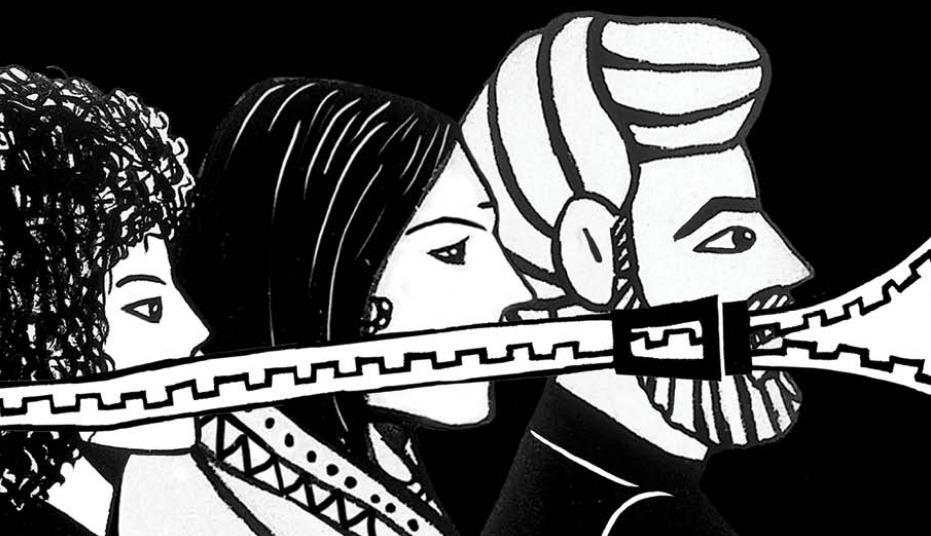
Set in the 19th century, A Gardener in the Wasteland (2011) portrays the life and ideals of Jotiba Phule, often regarded as one of the pioneers of social reform in India. Both the writer, Srividya Natarajan, and the illustrator, Aparajita Ninan, explore themes of social injustices in narrative and visual form. The collaboration between the writer and illustrator creates a multi-dimensional narrative experience, allowing readers to engage with both the text and visuals.
The narrative begins with Phule’s early life and upbringing in a society marked by rigid caste hierarchies and entrenched social inequalities. Phule’s encounters with injustice (for instance, witnessing the ill-treatment of lower-caste individuals) fuel his determination to challenge the prevailing social order. The novel highlights his efforts to promote education for all, regardless of caste or gender. With his wife, Savitribai Phule, by his side, Jotiba Phule establishes schools for lower-caste children and works to empower marginalized communities. The graphic novel captures his relentless struggle against orthodoxy and his courageous stand against deeply ingrained prejudices. Phule’s writings and speeches, emphasizing the need for equality and justice, play a pivotal role in his quest for social reform.

